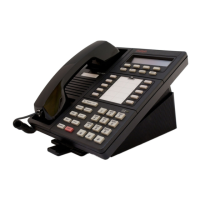MERLIN LEGEND Communications System Release 6.1
System Programming Guide
555-661-111
Issue 1
August 1998
Programming Basics
Page 1-3Introduction to System Programming
1
Types of Programming 1
Listed below are the three types of programming available for the communications
system.
■ System Programming. This type of programming enables the system
manager to program features that affect all or most system users, and
requires one of the following:
— An MLX-20L™ telephone connected to one of the first five jacks of
the first MLX module in the control unit.
— A PC with System Programming and Maintenance (SPM) software.
SPM emulates a system programming console on your PC. The PC
should be connected to the lower port (labeled ADMIN) on the
processor module. A PC with a modem can perform system
programming remotely through the public network, or by connecting
to a tip/ring extension jack (012 T/R, 016 T/R, or 008 OPT module)
on the communications system. A built-in modem in the processor
allows the PC and the communications system to communicate.
■ Extension Programming. This type of programming enables individual
extension users and system operators (except for Queued Call Console
operators) to change their extension features to meet individual needs.
For details about extension programming, see the appropriate user and
operator guides.
■ Centralized Telephone Programming. This type of programming enables
the system manager to program any feature that can be programmed by
individual extension users or system operators. Some features can be
programmed only in centralized telephone programming. Centralized
telephone programming can be done on the programming console or on a
PC with the SPM software. See Chapter 5, “Centralized Telephone
Programming.”
NOTE:NOTE:NOTE:
If your system has the Integrated Solution II* or Integrated Solution III*
(IS II/III) UNIX
® application, see Chapter 2, “Programming with SPM” for a
list of the appropriate documentation.
* No longer orderable.

